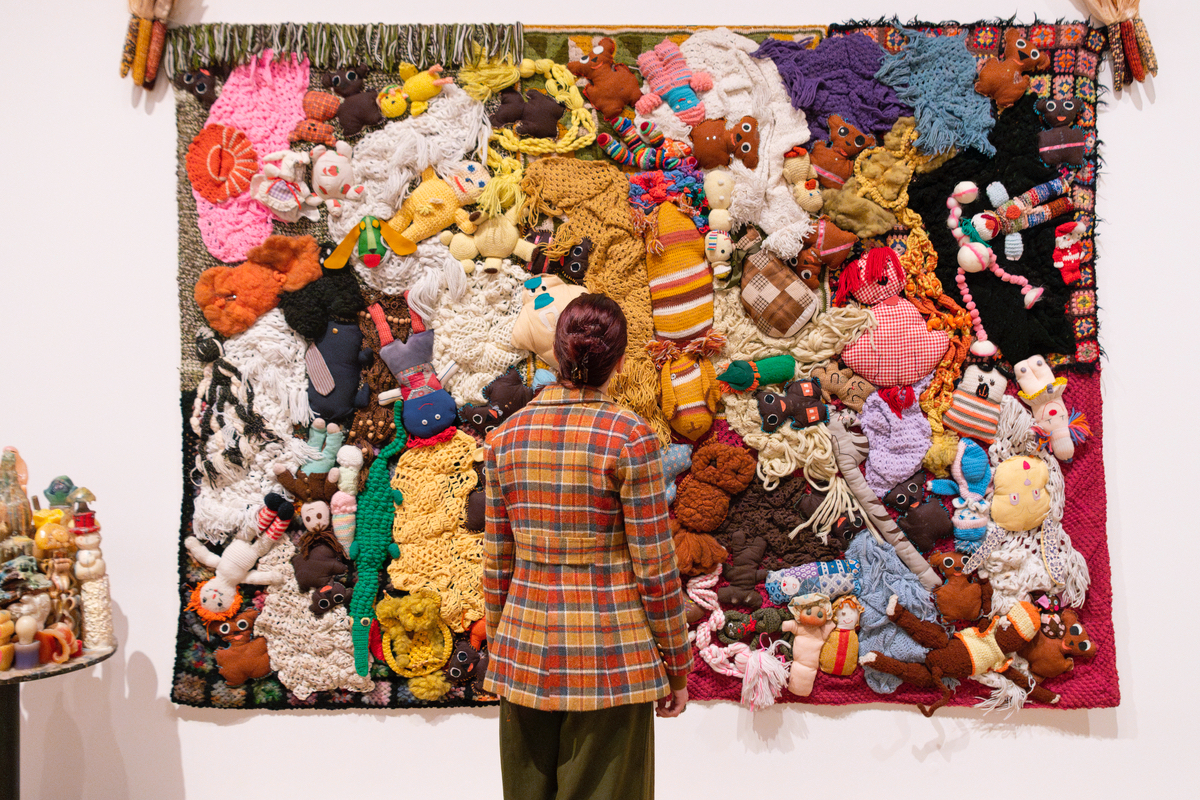Mike Kelley: Ghost and Spirit at Tate Modern – a house of horrors
Were you to stumble upon the works of Mike Kelley in, say, an abandoned warehouse rather than the galleries of the Tate Modern, you would fear for your safety, if not your sanity. Strolling through works collected from the late 1970s up until Kelley’s suicide in 2012 is like happening upon the headquarters of some [...]


Were you to stumble upon the works of Mike Kelley in, say, an abandoned warehouse rather than the galleries of the Tate Modern, you would fear for your safety, if not your sanity.
Strolling through works collected from the late 1970s up until Kelley’s suicide in 2012 is like happening upon the headquarters of some esoteric cult, full of strange, geometric sketches and menacing slogans, all pregnant with meaning but built on a foundation of absurdity.
He was obsessed with the seething, discordant horniness that lurks beneath the innocent facade of adolescence, scratching through the veneer with his fingernails until he drew blood.
He often became fixated on some pop-culture totem: poltergeists or zoo monkeys or aliens (complete with anal probes, of course), themes he built a kind of quasi religious structure around, filled with occult-like diagrams and page upon page of “practical” advice (topics include why poltergeists are more likely to present themselves to adolescents).
One room features a row of sculptures he thought could be used to commune with another world, including a multi-tiered birdhouse, alongside vast tapestries and installations depicting illuminati-esque shapes and symbols.
“A spirit collector and a birdhouse are the same thing. They both attract and house heavenly bodies,” reads one note scribbled on the torn-out page of a legal jotter.
None of this was designed to be taken entirely seriously: “The viewer must at least suspect that I am not the thing I claim to be,” reads one cryptic note. His contemporaries described his art as being like a classroom lecture stripped of its meaning.
Memory is another of his fixations: both its power and its limitations, and how trauma seeps into the crevices between the two. He created architectural scale-models of places from his childhood – schools, old houses – and left the parts he’d forgotten blank, creating chilling voids where nightmares surely reside.
He is perhaps most famous for his works involving repurposed childhood toys bought at thrift stores (my first brush with his work was the knitted alien that adorns the cover of Sonic Youth’s 1992 album Dirty).

One canvas sees dozens of such toys picked apart at the seams and sewn into a canvas. Nearby there’s a woven rug bulging disconcertingly: what, exactly, is hiding beneath? And in a corner lurks a sculpture made from soft toys stitched together to form a shapeless monstrosity, a corruption of childhood memories.
But perhaps they were always a little corrupt – Kelley asks whether gifting toys to a child is really just exchanging material products for love, a cynical reading of what we assume to be an act of pure altruism.
Other video works examine the relationship between the id and the ego, the former depicted as an absurd sailor being carried upon one’s shoulders making stupid, impossible demands.
While you take in all of this you can hear the distant screens and moans of the exhibition’s final room, which goes full House of Horrors. Here a film of a child being chased by a demonic figure – complete with terrified screaming – competes with a clothes rail spinning in place and videos of a Halloween party reconstructed from old yearbook photos, in which teens in costume attack each other. It’s overwhelming, a little frightening, and entirely in keeping with the onset of spooky season.
• Mike Kelley: Ghost and Spirit is on now at the Tate Modern



